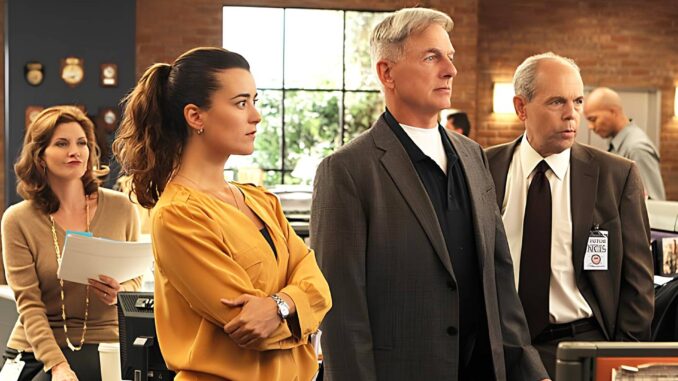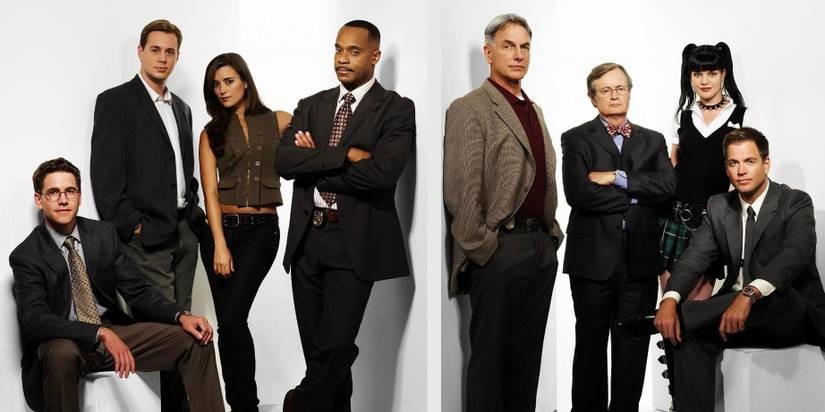
An expert revealed that one aspect of shows like NCIS is more accurate than viewers would think. NCIS is a police procedural that focuses on the Naval Criminal Investigative Service, the group that investigates crimes that involve the US Navy. A wildly successful show, it has continued since it premiered in 2003, and NCIS season 23 is set to debut on October 14 on CBS.
Since the show has millions of loyal viewers, there was a lot of interest in NCIS’ season 22 ending. Those same fans who also care about NCIS’ cast of characters may not realize how the show compares to reality. Fortunately, an expert has recently revealed that one aspect of shows like NCIS is a lot more realistic than most may know.
In an interview with Rachel Foertsch for ScreenRant, Matthew Steiner spoke about facial recognition technology. After many years of working with the New York City Police Department’s Crime Scene Unit, Steiner retired as a First Grade Detective. In addition to working with crime scene investigators for years, Steiner also earned enough respect to become the lead instructor for the Crime Scene Unit.
While being interviewed by ScreenRant, Steiner revealed that the facial recognition technology that is seen on TV is mostly realistic. While Steiner clarified that facial recognition doesn’t work in all cases, he explained that it is regularly used by the police. However, Steiner explained that facial recognition identification only creates leads and isn’t considered to be evidence. Check out Steiner’s comments below:
ScreenRant: Now, I’m sure you’ve seen the technology that they use in some of these shows, like the facial recognition, thumbprints. It almost seems they treat it almost like a perfect process where it’s like, “Okay, this gets us the results.” How accurate has that technology been in your experience?
Steiner: The facial recognition is interesting. People like to argue against it, but when you go to the airport now, that’s what they use. If you have global entry or pre-screening, they’re using that. The future of that is just going to be you walking up to a camera, it knows who you are, and you’re getting on a flight. So it’s pretty good.
Is it perfect? No, it’s not perfect. And what all jurisdictions that use it have to say is that this is not evidence. This is an investigative lead only. So, just because they get an identification through facial recognition anywhere in the United States does not allow them to arrest that person. It’s just an investigative lead. Then, they have to find real evidence to support their arrest. The hit alone is not an arrest.
What’s cool about it, though, is what they could do with the technology so they can have half the person’s face and just generate the other part and see if they get a hit, or a witness may be like, “Yeah, he kind of looks like Suge Knight.” And then they can just put Suge Knight’s photograph into the database and see who looks like them, and see if that person gets picked out.
And then, if they have a suspect from that, the person doesn’t have an alibi, build the case against that person, and then they have enough to arrest them. But the identification for facial recognition alone is not enough evidence for arrest.
After talking about facial recognition technology, Steiner explained one aspect of police shows that is unrealistic. When asked about TV cops telling IT experts to enhance footage to make it clearer, Steiner explained that’s not a real thing that can happen. That said, Steiner stated that cameras being everywhere these days makes it easier for the police to find clear footage.
ScreenRant: In the older episodes of the show, they’ll have footage that they picked up from a gas station camera, and it’s super grainy, obviously, because it’s like, I like two zoom and a hand zoom, and they’re like, oh, that’s it. We got our guy.
Steiner: So, that’s one of those things that they show that is not a reality. There’s very little you could do. Garbage in, garbage out. There’s very little you could do if you have low resolution, grainy, high ISO video. Maybe they could do certain things like see a license plate sometimes, but usually not. If you can’t see it and it’s not there, it’s not there.

It is just capturing digital data. Now, back in the day when this was analog, there was a lot more stuff they could do, but on video, if you see there’s a light there and it’s whiteness, that’s called clipping. There’s no information in there. You can’t zoom, enhance and see anything in there. If it’s kind of dark, and there could still be some data there, sometimes they can enhance that and they can brighten up and see things.
There is cool stuff that they could do. But this shows, yeah, there was an episode of a CSI where they zoomed into the reflection on somebody’s eyeball to identify the person that killed them from a surveillance camera. And you’re lucky that you can even see who is who, looking at the video.
Sometimes it’s good, sometimes it’s not so good. But the one thing that you do notice over time is that we have more of it. It’s everywhere. It’s like Ring cams everywhere, just take notice of how many cameras are passing, whether it’s in front of somebody’s house, going to the ATM, going into a store. It covers a lot of our life.
So, it comes into every single investigation. There’s a lot of theories about why we don’t have the number of serial killers that we have now, and one of the major bullet points is that there’s surveillance everywhere. We have cameras everywhere, and that’s part of every single modern investigation.
What This Means For Shows Like NCIS
During Steiner’s interview with ScreenRant, the expert stated that the portrayal of Abby Sciuto was unrealistic. With that in mind, it is nice to learn that the forensics expert identified another aspect of the show that is more realistic than many viewers may expect.
As a result of Steiner’s remarks about shows like NCIS, it seems clear that series about investigators are a mixed bag in terms of realism. That means that any fans who are concerned about accuracy should likely do their own research and engage their reasoning skills.
Our Take On How Realistic NCIS’ Use Of Facial Recognition Technology Is
Given that Steiner has found different aspects of NCIS to be realistic, while others could never happen in real life, it matches the perception of most shows. To tell a story in an economical way that fits into a one-hour time slot means that not every aspect of a show can mirror reality.
Still, I have to admit that every time I see the NCIS team using facial recognition technology in the future, I will likely reflect on that matching actual police work. Conversely, if the show has IT experts enhancing footage, I may just chuckle to myself about how unrealistic it is.
Those small reactions aside, I will continue to enjoy NCIS the same way I always have. I will judge each episode on its entertainment value. While there is an expectation that the show will stretch some parts of reality for the sake of the story, it’s nice to know which parts have a basis in real life technology.
